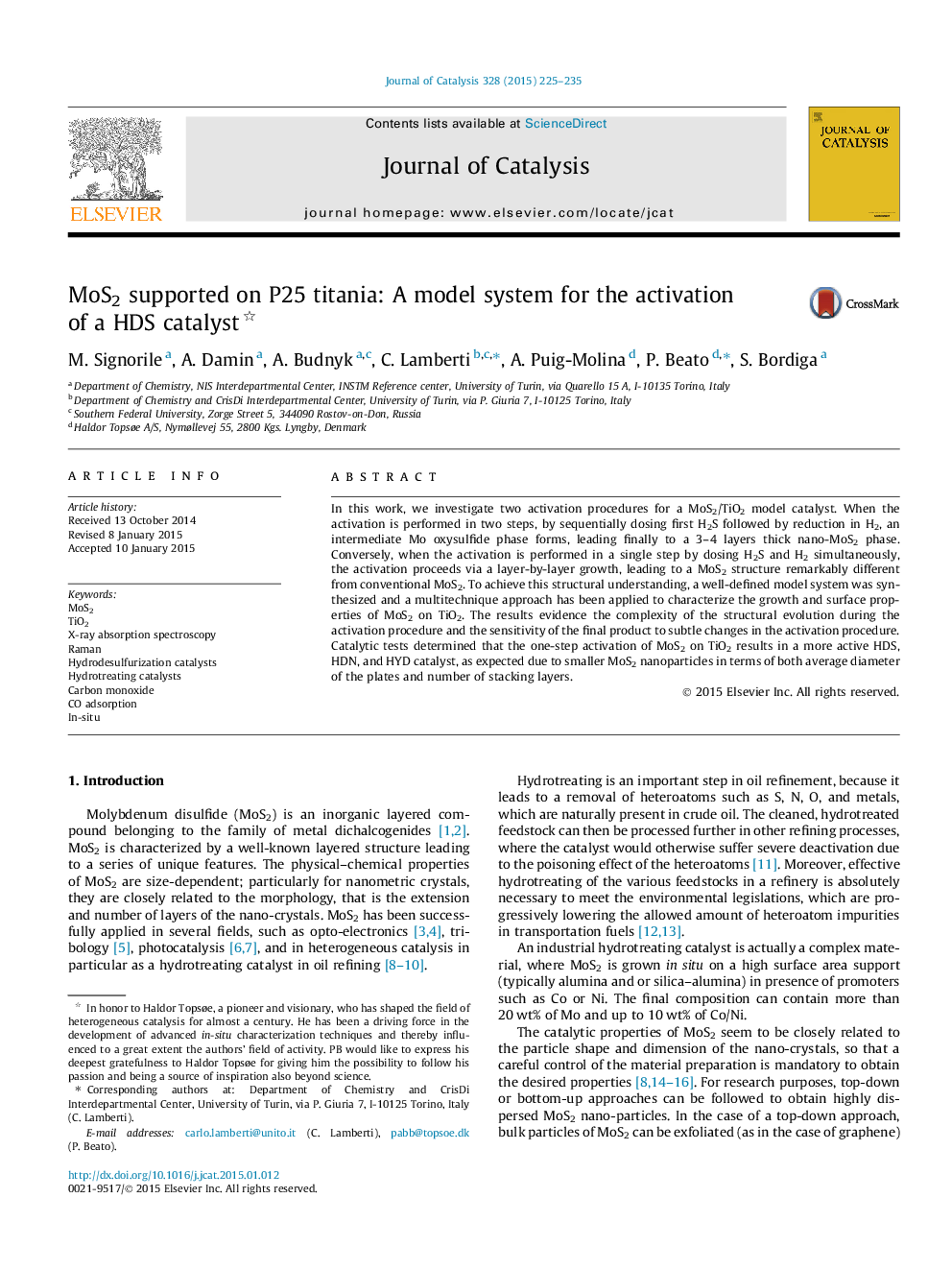| Article ID | Journal | Published Year | Pages | File Type |
|---|---|---|---|---|
| 60780 | Journal of Catalysis | 2015 | 11 Pages |
•Determination of the intermediate steps in the sulfidation process MoS2 catalyst.•Structural, vibrational, and electronic understanding of MoS2/TiO2.•Understanding of the role of H2 in the sulfiding medium.•Fine-tuning of the activation procedure to produce nanosized MoS2.
In this work, we investigate two activation procedures for a MoS2/TiO2 model catalyst. When the activation is performed in two steps, by sequentially dosing first H2S followed by reduction in H2, an intermediate Mo oxysulfide phase forms, leading finally to a 3–4 layers thick nano-MoS2 phase. Conversely, when the activation is performed in a single step by dosing H2S and H2 simultaneously, the activation proceeds via a layer-by-layer growth, leading to a MoS2 structure remarkably different from conventional MoS2. To achieve this structural understanding, a well-defined model system was synthesized and a multitechnique approach has been applied to characterize the growth and surface properties of MoS2 on TiO2. The results evidence the complexity of the structural evolution during the activation procedure and the sensitivity of the final product to subtle changes in the activation procedure. Catalytic tests determined that the one-step activation of MoS2 on TiO2 results in a more active HDS, HDN, and HYD catalyst, as expected due to smaller MoS2 nanoparticles in terms of both average diameter of the plates and number of stacking layers.
Graphical abstractFigure optionsDownload full-size imageDownload high-quality image (71 K)Download as PowerPoint slide
